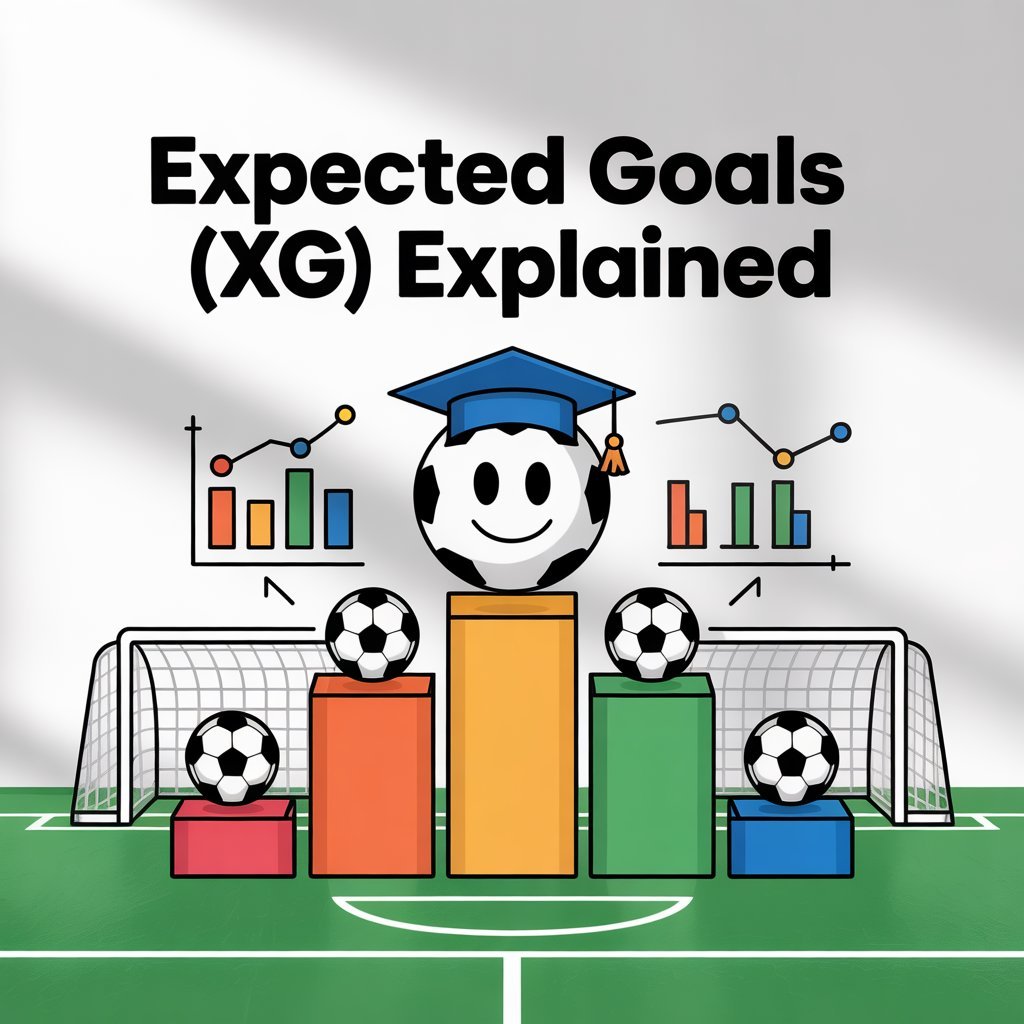Expected goals (xG) is one of the coolest stats in soccer! If you love the game but get confused by numbers, don’t worry this guide will make xG super simple. Imagine knowing whether a player should have scored a goal, not just if they did. That’s what xG does! It helps fans, coaches, and even players understand which chances were truly great and which were just lucky.

Why does xG matter? Because soccer isn’t just about goals it’s about good chances. A team might lose 1-0 but actually had better opportunities. xG helps us see that! Whether you’re a new fan or a stats nerd, this post will make you love xG even more. Let’s dive in!
What Is Expected Goals (xG)?
Expected goals (xG) is a stat that measures the quality of a scoring chance. Instead of just counting goals, it asks: “How likely was this shot to score?”
For example:
- A penalty kick has a high xG (around 0.75) because 75% of penalties score.
- A long-range shot might have a low xG (like 0.05) because only 5% of those go in.
xG uses data like shot location, angle, defender pressure, and even the shooter’s skill to give each chance a score between 0 (no chance) and 1 (certain goal).
Why Is xG Important in Soccer?
Goals can be lucky or unlucky, but xG shows the real story. Here’s why it’s useful:
- Fairer analysis – A team might win 1-0 from a lucky deflection, but xG could show they were outplayed.
- Better predictions – Teams with consistently high xG usually win more over time.
- Player performance – Strikers with high xG but low goals might just be unlucky!
Without xG, we might think a team “deserved” to win just because they scored. But xG tells us if they created good chances or just got lucky.
How Is xG Calculated?
xG isn’t just a guess it’s based on thousands of past shots! Here’s how it works:
- Shot location: Closer to goal = higher xG.
- Angle: Straight shots are easier than tight angles.
- Defenders: If a player is pressured, xG drops.
- Body part: Headers are harder than foot shots.
- Type of play: Fast breaks have higher xG than slow attacks.
Stats companies like Opta and StatsBomb track all this to give each shot an xG value.
xG vs. Actual Goals: What’s the Difference?
- Actual Goals = What did happen.
- xG = What should have happened based on chance quality.
If a player scores 10 goals but their xG is only 5, they’re overperforming (maybe they’re super clinical or lucky). If they score 3 goals from 8 xG, they’re underperforming (maybe bad finishing or great goalkeeping).
Fun Examples of xG in Real Games
- Lucky Goal: A weak shot deflected in (xG: 0.05).
- Great Miss: A striker misses an open net (xG: 0.90).
- Smart Play: A team takes only high-xG shots and wins.
xG helps us see these moments differently!
Can xG Predict Future Matches?
Yes! Teams with higher xG over time tend to win more. If a club keeps creating 2.5 xG per game but only scoring 1, they’ll likely improve. But remember:
- xG doesn’t account for superstar moments (like Messi’s magic).
- Goalkeepers can change outcomes too.
Still, xG is one of the best ways to predict long-term success.
Do All Soccer Teams Use xG?
Most top clubs do! Coaches use xG to:
- Find weaknesses (“We take too many low-xG shots!”).
- Scout opponents (“They allow too many high-xG chances!”).
- Improve training (“Practice finishing high-xG situations!”).
Even fans use xG to argue about games—like saying, “We deserved to win because our xG was higher!”
Common xG Myths Debunked
❌ “xG is just for nerds!” → Nope, it helps everyone understand the game better.
❌ “High xG means you should win.” → Not always—finishing matters too!
❌ “xG ignores player skill.” → Some models do include shooter quality.
How to Use xG as a Fan
Want to sound smart while watching soccer? Try these xG tips:
- Check xG maps after games (FotMob & Understat show them).
- Compare xG to actual goals was a win deserved or lucky?
- Use xG in fantasy soccer to pick players getting good chances.
Conclusion
Expected goals (xG) makes soccer even more fun! Instead of just counting goals, we can see which teams really create the best chances. Whether you’re a coach, player, or fan, xG helps you understand the game deeper.
Next time you watch a match, check the xG stats you might be surprised!
FAQs
Q1: What does a 0.5 xG mean?
A: It means the shot had a 50% chance of being a goal.
Q2: Can a team have high xG but lose?
A: Yes! If they waste chances or the opponent’s keeper saves everything.
Q3: Who invented xG?
A: Stats experts in the early 2010s, but it became popular around 2017.
Q4: Does xG work for other sports?
A: Similar stats exist (like “expected points” in basketball), but xG is best for soccer.
Q5: Where can I find xG stats?
A: Try Understat, FotMob, or StatsBomb.
Q6: Do penalties have the highest xG?
A: Almost! They’re usually around 0.75–0.80 xG.
Q7: Can a long shot have high xG?
A: Rarely most are low, unless it’s an amazing position.
Q8: Why do some fans hate xG?
A: Some think it takes away from the “magic” of soccer, but it just adds more insight!

